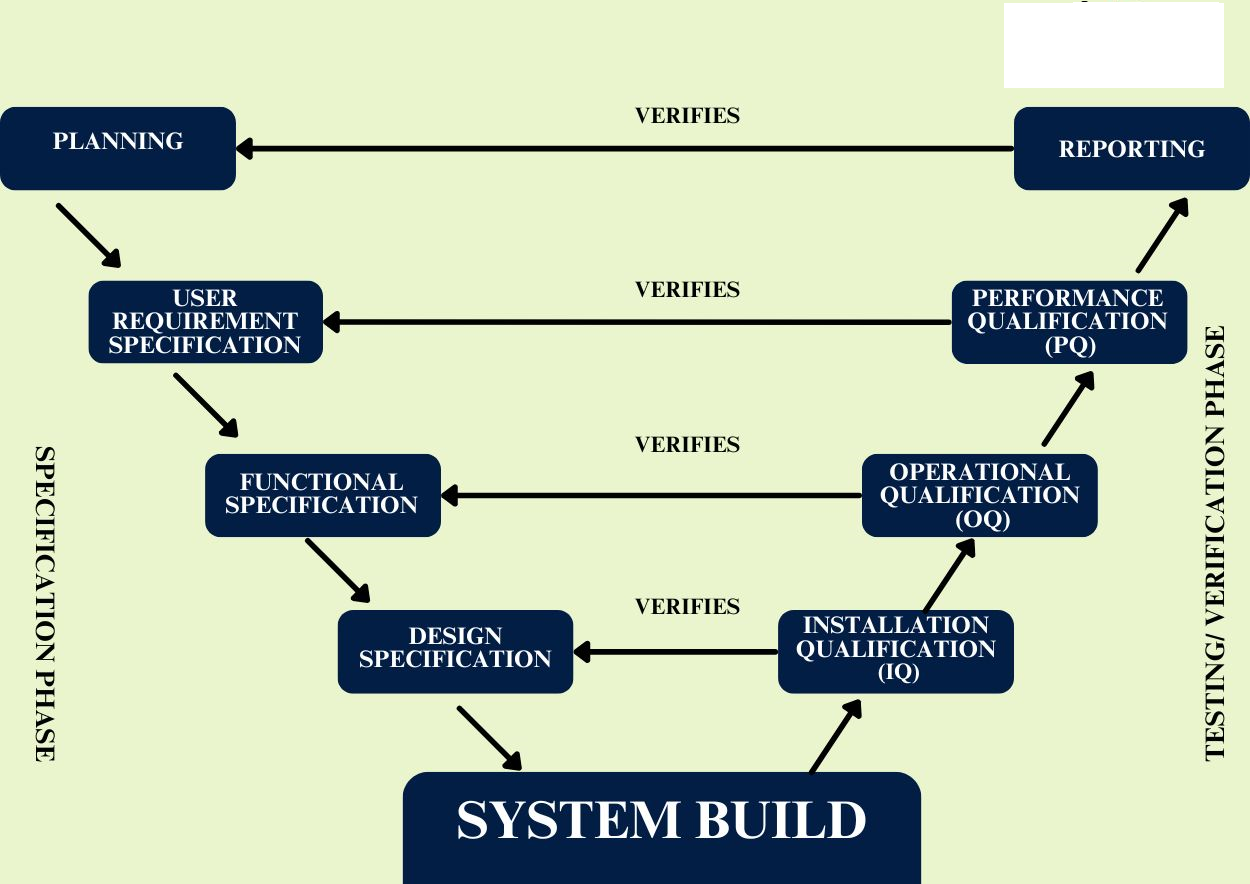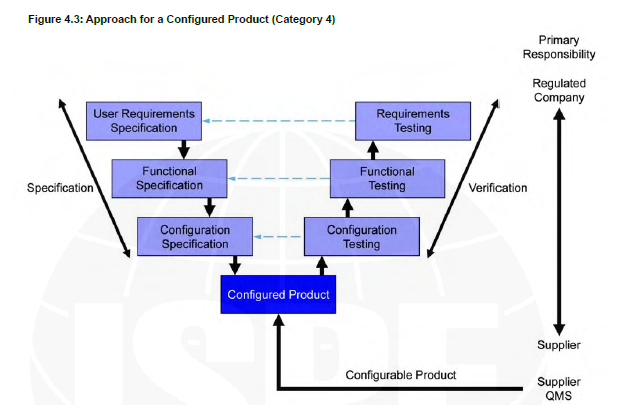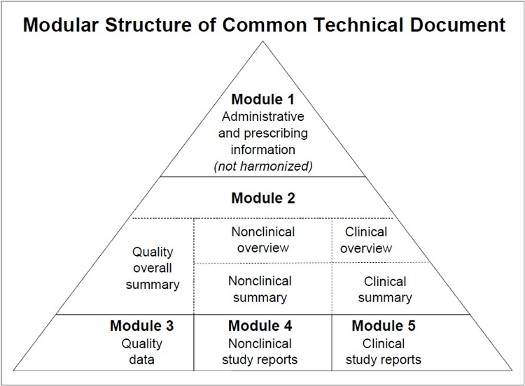GEMBA Vs KAIZEN Vs POKA-YOKE Vs KANBAN Vs 5S
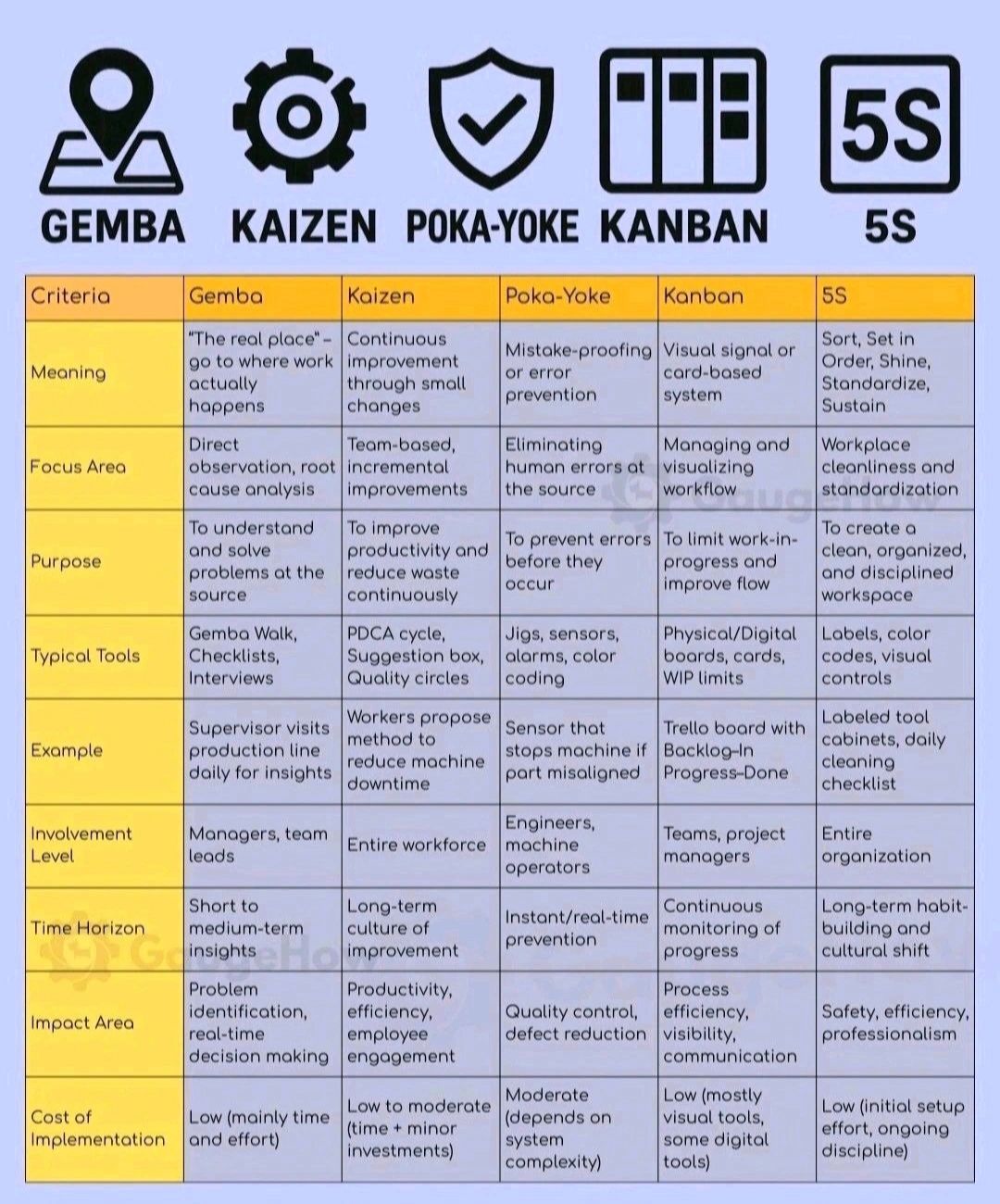
Pharma Definition/Abbreviation, Pharma Beginners
GEMBA Vs KAIZEN Vs POKA-YOKE Vs KANBAN Vs 5S

AADA: Abbreviated antibiotic drug application
ADE: Adverse drug event
ADME: Absorption, distribution, metabolism, and excretion
AHU: Air Handling Unit
ANDA: Abbreviated new drug application
ANVISA: Agência Nacional de Vigilância Sanitária (National Health
Surveillance Agency Brazil)
AP: Applicants Part (of EDMF)
API: Active pharmaceutical ingredient
APR: Annual product review (APQR – Annual product quality
review)
AQL: Acceptable quality level
AR: Analytical Reagent
ASHRAE: American Society of heating, Refrigeration and
Air Conditioning Engineers
ASM: Active Substance Manufacturer
ASMF: Active Substance Master File
AST: Accelerated stability testing
ASTM: American Society for Testing and Materials
BA/BE: Bioavailability/bioequivalence
BCS: Biopharmaceutical classification system
BET: Bacterial Endotoxins Test
BFS: Blow Fill Seal
BI: Biological Indicator
BMR: Batch Manufacturing/Processing Record
BOD: Biological Oxygen Demand
BOM: Bill of Materials
BOPP: Biaxilary Oriented Polypropylene
BP: British Pharmacopoeia
BPR: Batch Packaging Record
BRMS: Biologics Regulatory Management System
BSE: Bovine spongiform encephalopathy (mad cow disease)
CAPA: Corrective and preventive action
CBE: Changes being effected
CBER: Center for Biologics Evaluation and Research (FDA)
CCIT: Container closure integrity test
CDER: Center for Drug Evaluation and Research (FDA)
CDSCO: Central drug standard control organization (India)
CEP: Certification of suitability of European Pharmacopoeia monographs
CFR: Code of Federal Regulations
CFU: Colony Forming Unit
cGMP: Current Good Manufacturing Practices
CIP: Clean in place
CMC: Chemistry, manufacturing and controls
CMS: Continuous monitoring system
COA: Certificate of analysis
COS: Certificate of suitability
COPP: Certificate of Pharmaceutical Products
CPP: Critical Process Parameter
CQA: Critical Quality Attribute
CTD: Common technical document
DMF: Drug master file
DOP: Dioctyl Phthalate
DQ: Design Qualification
EDMF: European drug master file
EDQM: European Directorate for the Quality of Medicines
EH&S: Environmental health and safety
EIR: establishment inspection report (FDA)
EMEA: European Medicines Agency (formerly European Medicines Evaluation Agency)
EP: European Pharmacopoeia
EPS: Expanded polystyrene
ETP: Effluent Treatment Plant
EU: Endotoxins unit
EU: European Union
FAT: Factory Acceptance Testing
FBD: Fluid-bed dryer
FDA: Food and Drug Administration, United States
FDC: Fixed Dose Combination
FEFO: First expiry first out
FG: Finished Goods
FIFO: First in first out
FMEA: Failure modes and effect analysis
FOI: Freedom of information
GAMP: Good automated manufacturing practice
GC: Gas Chromatography
GCLP: Good clinical laboratory practice
GCP: Good clinical practice
GDP: Good distribution practice
GEP: Good engineering practice
GGP: good guidance practice
GIT: Gastrointestinal Tract
GLP: Good laboratory practice
GMO: Genetically modified organism
GMP: Good manufacturing practice
GPT: Growth Promotion Test
GRAS/E: Generally recognized as safe and effective
GRP: Good review practice
HACCP: Hazard analysis critical control point
HDPE: High Density Polyethylene
HEPA: High efficiency particulate air (filter)
HPLC: High performance liquid chromatography
HSA: Health Sciences Authority, Singapore
HVAC: Heating, ventilating, and air conditioning
ICAH: International Conference on Harmonization
IH: In house
IM: Intramuscular
IND: Investigational new drug
INDA: Investigational new drug application
IP: Indian Pharmacopeia
IPA: Isopropyl Alcohol
IPS: In process control
IQ: Installation qualification
IR: Immediate release
ISO: International Organization for Standardization
ISPE: International Society for Pharmaceutical Engineering
IV: Intravenous
JP: Japanese Pharmacopoeia
KOS: Knowledge organization system
LAF: Laminar air flow
LAL: Limulus Amoebocyte Lysate
LD: Lethal dose
LD50: Lethal dose where 50% of the animal population die
LDPE: Low Density Polyethylene
LIMS: Laboratory Information Management System
LIR: Laboratory Investigation Report
LOD: Loss on drying
LOD: Limit of detection
LOQ: Limit of quantification
LR: Laboratory Reagent
LVPs: Large Volume Parenteral
MA: Marketing Authorization
MAA: Marketing Authorization Application
MAC: Maximum Allowable Carryover
MCC: Medicines control council (South Africa)
MFR: Master Formula Record
MEDSAFE: Medicines and medicinal devices safety authority (New Zealand)
MHRA: Medicines and Healthcare products Regulatory Agency (UK)
MOA: Method Of Analysis
MSDS: Material Safety Data Sheets
NCE: New chemical entity
NDA: New Drug Application
NF: National Formulary
NIR: Near Infra Red Spectroscopy
NON: Notice of non-compliance (Canada)
ODI: Orally Disintegrating Tablet
OQ: Operation Qualification
OSD: Oral Solid Dosage
OSHA: Occupational Safety And Health Administration
OTC: Over-the-counter
OOS: Out of specification
OOT: Out of trend
PAC: Post-approval changes
PAO: Poly alpha olefin
PAT: Process Analytical technology
PET: Preservative efficacy test
PET: Polyethylene
PIC/S: Pharmaceutical Inspection Co-operation Scheme
PLC: Programmable Logic Control
PQ: Performance Qualification
PVC: Polyvinyl Chloride
PVDC: Polyvinylidene Chloride
PW: Purified Water
QA : Quality Assurance
QC: Quality Control
QBD: Quality by design
QM: Quality Manual
QSD: Quality System Dossier
QSM : Quality System Management
QMS: Quality Management System
RH: Relative humidity
RLAF: Reverse laminar air flow
RLD: Reference listed drug
RM: Raw material
RO: Reverse Osmosis
ROPP: Roll On Pilfer Proof
RS: Related Substance
SAL: Sterility Assurance Level
SAT: Site Acceptance Testing
SDN: Screening Deficiency Notice (Canada)
SIP: Sterilization in place/Steam in place
SLS: Sodium Lauryl Sulphate
SMF: Site master file
SOP: Standard operating procedure
SPE: Society for Pharmaceutical Engineering
SUPAC: Scale-up and post approval changes
SVP: Small Volume Parenteral
TC: Thermocouple
TDS: Total Dissolved Solids
TGA: Therapeutics goods administration (Australia)
TOC: Total organic carbon
TSE: Transmissible spongiform encephalopathy
USFDA: United states foods and drugs administration
USP: United States Pharmacopeia
USP-NF: United States Pharmacopeia-National Formulary
URS: User Requirement Specification
VAI: Voluntary action indicated
VMP: Validation Master Plan
WFI: Water for injection
WHO: World Health Organization
WL: Warning letter
Quality Risk Management (QRM) is a systematic, science-based approach to identifying, assessing, controlling, communicating, and reviewing risks to product quality throughout its lifecycle. The goal is to ensure product safety and quality.
Key components of the QRM process
Benefits of Quality Risk Management
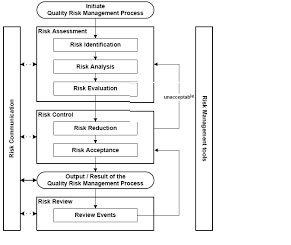
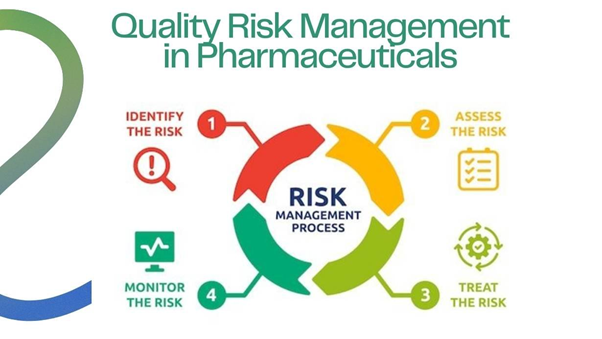

Quality by Design (QbD) is a systematic approach to product development that builds quality in from the start by focusing on a deep understanding of the product and its manufacturing process. It uses a science-based, risk-management approach to identify critical quality attributes (CQAs) and critical process parameters (CPPs), establishing a “design space” and control strategy to consistently meet quality targets throughout the product lifecycle.
Key principles and steps :-
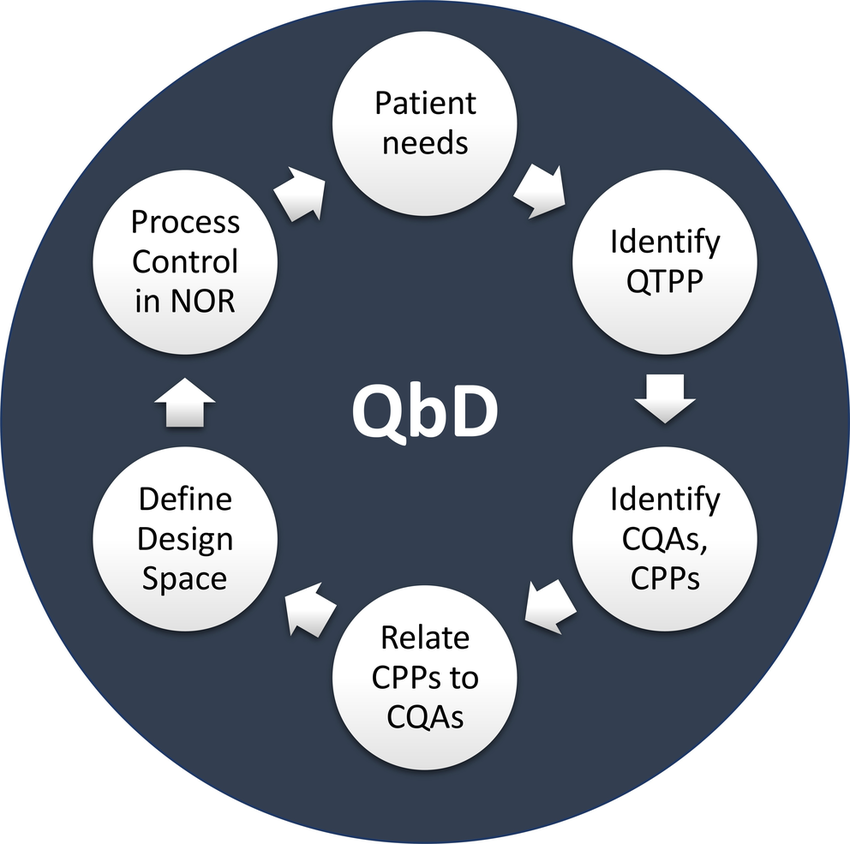
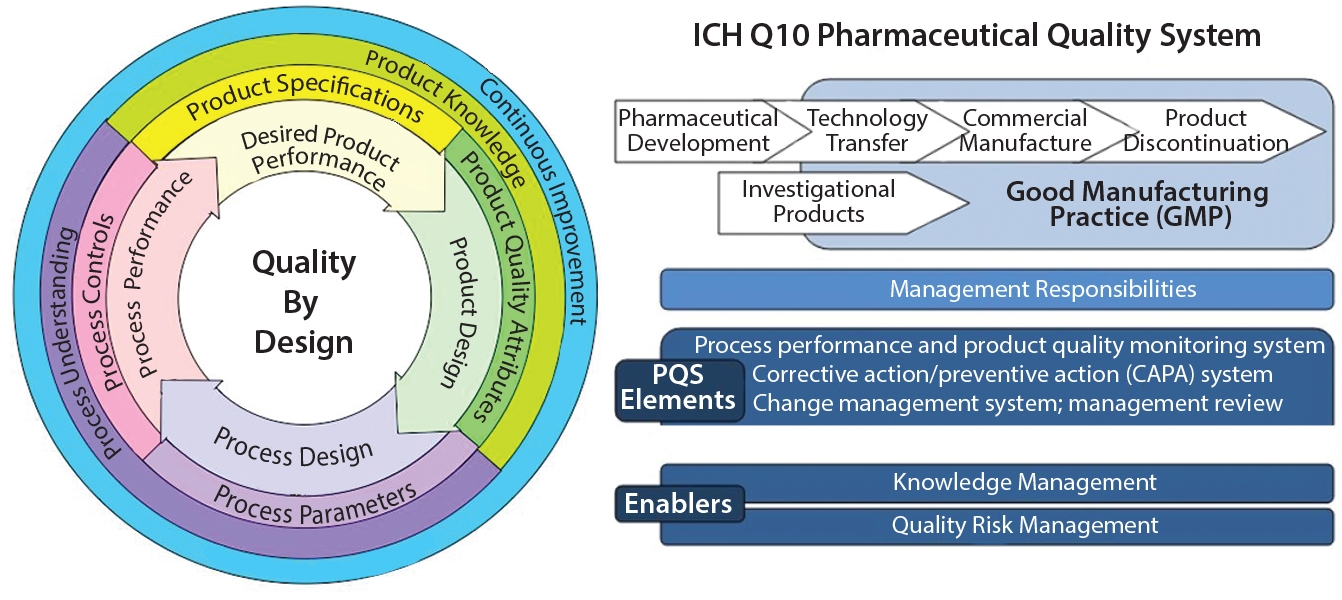
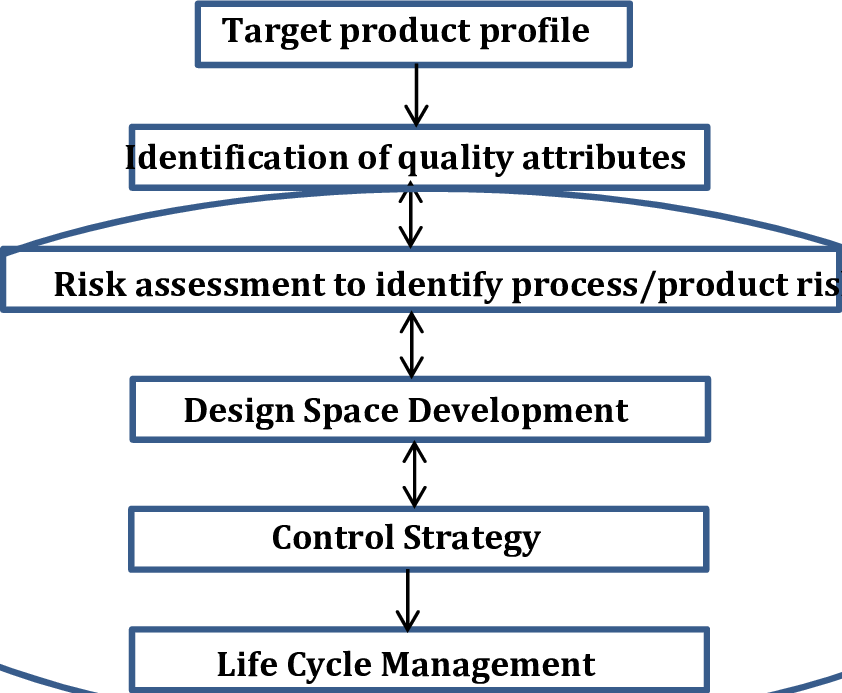

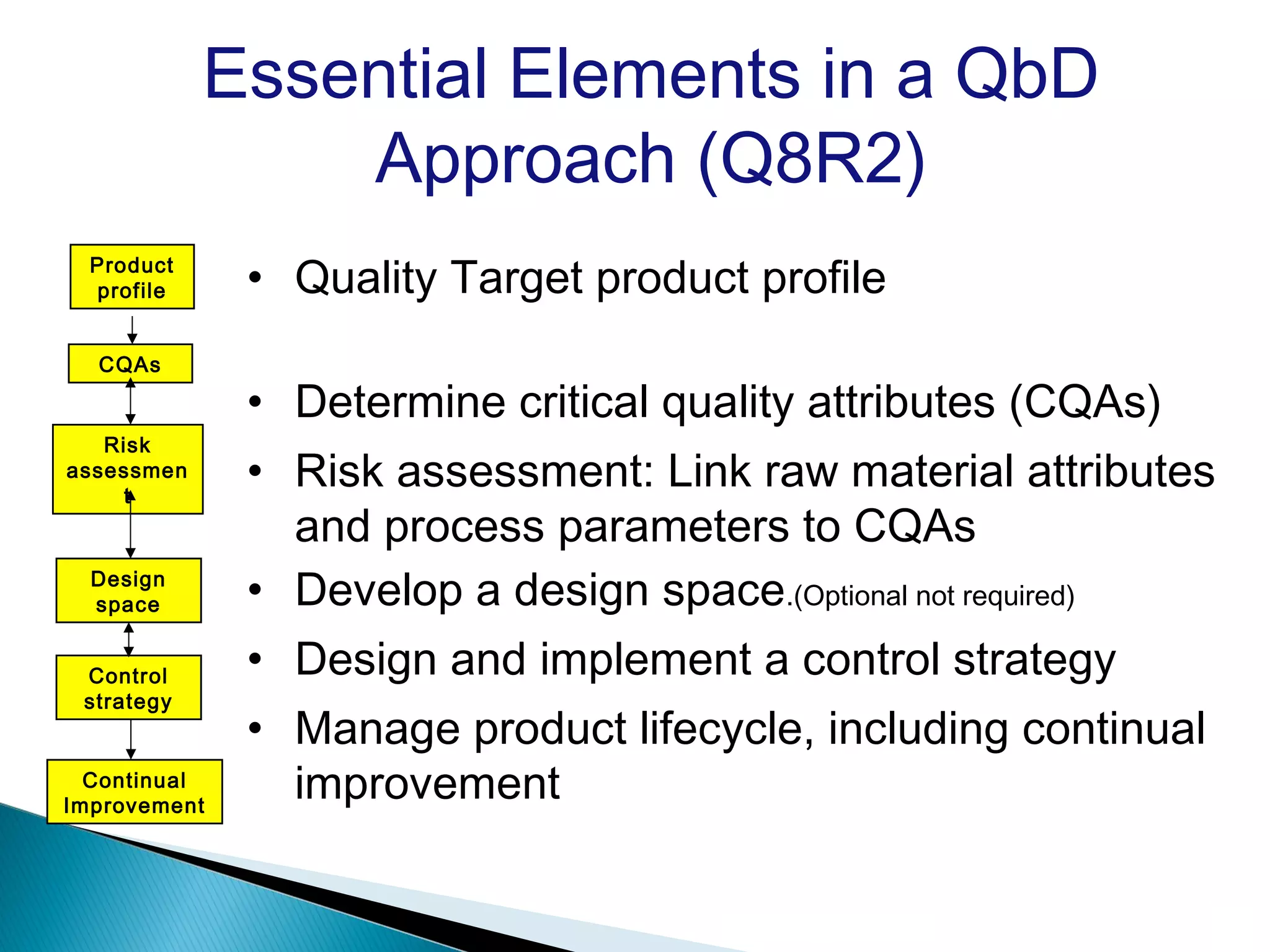
Nitrosamine impurities are a class of chemicals that are probable human carcinogens. They are a concern in pharmaceuticals due to potential risks from long-term exposure.
Sources of contamination
List of Nitroso Amine Impurities:-
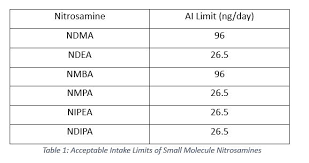
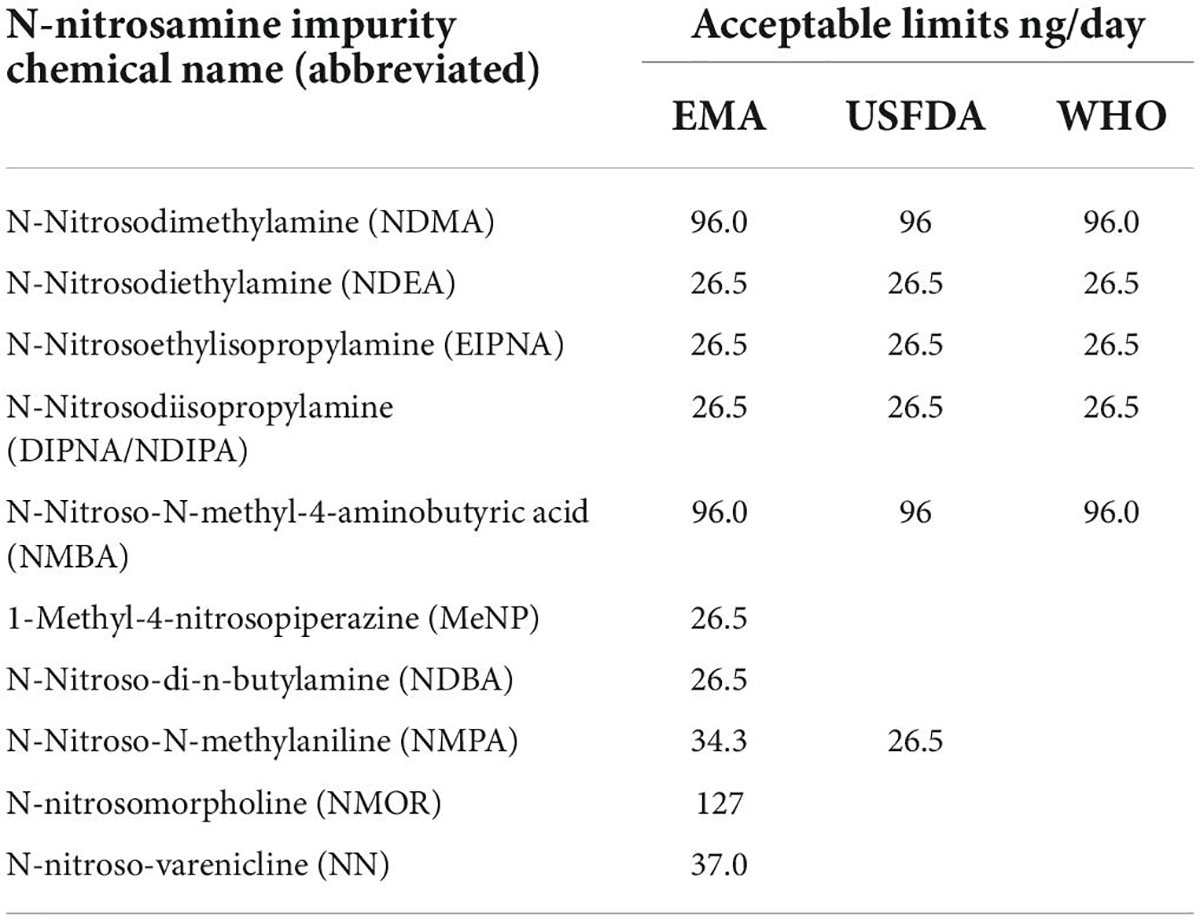
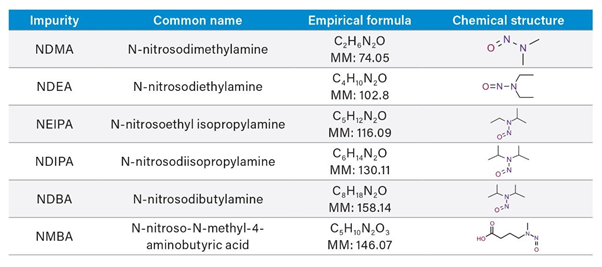


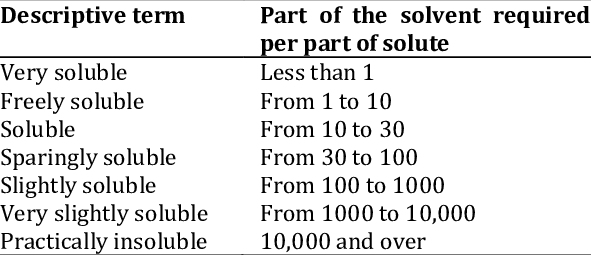
Regulatory Definitions of Data Integrity
USFDA: “Data integrity refers to the completeness, consistency, and accuracy of data. Complete, consistent, and accurate data should be attributable, legible, contemporaneously recorded original, and accurate (ALCOA)”.
MHRA: “The extent to which all data are complete, consistent, and accurate throughout the data lifecycle.”
WHO: “Data integrity is the degree to which a collection of data is complete, consistent and accurate throughout the data lifecycle. The collected data should be attributable, legible, contemporaneously recorded, original or a true copy, and accurate”.
PICS: “Data Integrity is defined as the extent to which all data are complete, consistent, and accurate, throughout the data lifecycle”.


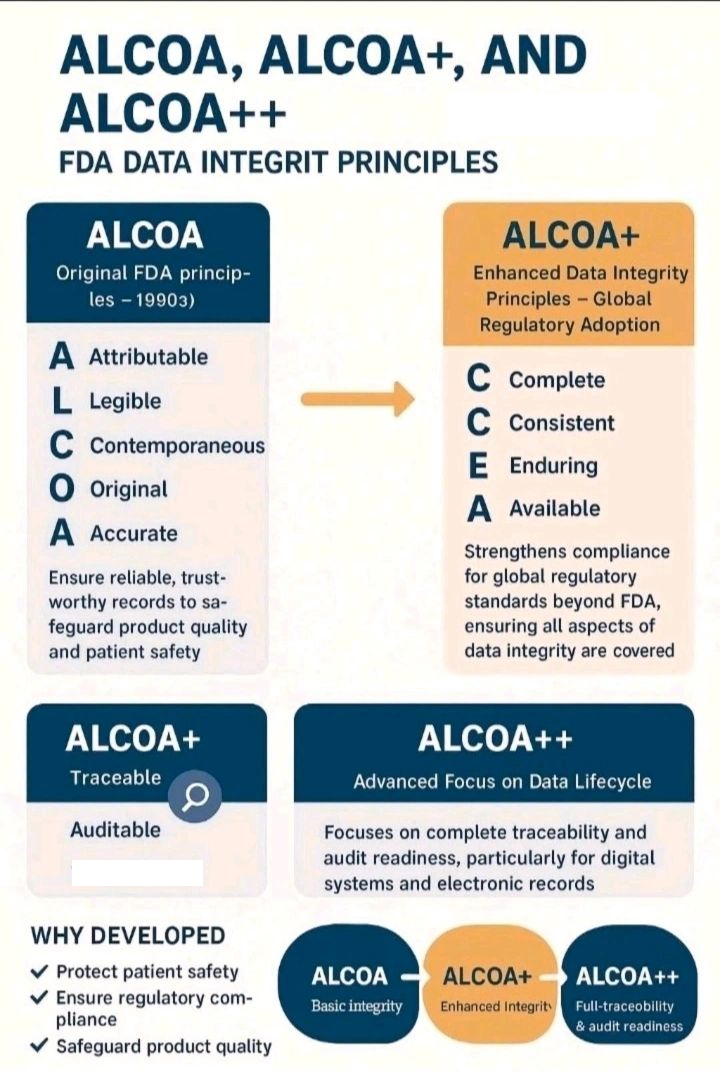
GAMP 5 guidelines for computer system validation (CSV) are found in the official GAMP 5 document, which provides a risk based approach to validation in GxP- regulated environments.
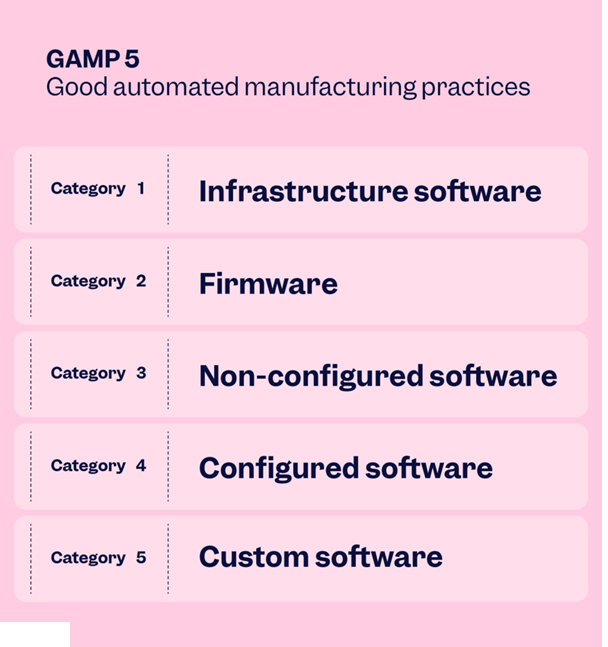
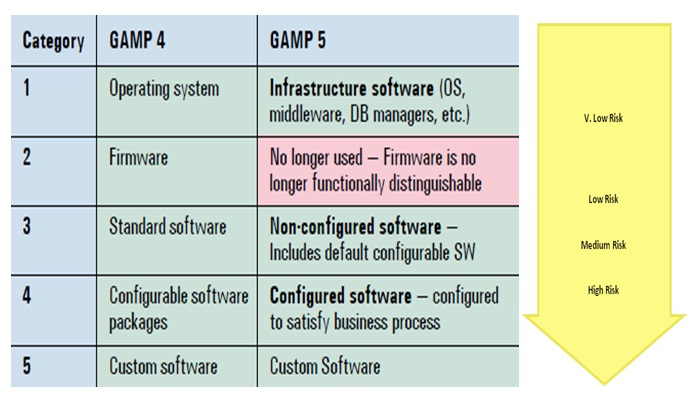
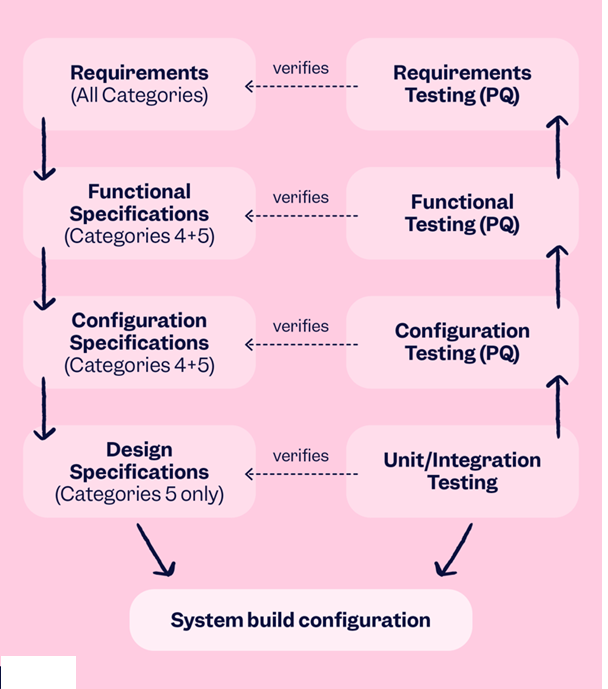
It applies to a wide range of computer systems, including process control software, SCADA systems, and laboratory equipment used in manufacturing, quality control, and other operations.
